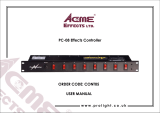Miller Travel Master Owner's manual
- Category
- Welding System
- Type
- Owner's manual
This manual is also suitable for
Miller Travel Master is a heavy duty linear prime mover designed and built for manufacturing applications requiring straight horizontal movements at precisely controlled, variable speeds. Positive linear drive occurs through a worm reducer and rack and pinion with direct English or metric speed displayed on a digital panel meter. A simple lever is provided to disengage the drive pinion from the carriage beam rack and thus allow manual movement of the carriage. Equipment may be mounted from the holes provided in the front face, the top surface, the crossarm, or from all of these surfaces.
Miller Travel Master is a heavy duty linear prime mover designed and built for manufacturing applications requiring straight horizontal movements at precisely controlled, variable speeds. Positive linear drive occurs through a worm reducer and rack and pinion with direct English or metric speed displayed on a digital panel meter. A simple lever is provided to disengage the drive pinion from the carriage beam rack and thus allow manual movement of the carriage. Equipment may be mounted from the holes provided in the front face, the top surface, the crossarm, or from all of these surfaces.




















-
 1
1
-
 2
2
-
 3
3
-
 4
4
-
 5
5
-
 6
6
-
 7
7
-
 8
8
-
 9
9
-
 10
10
-
 11
11
-
 12
12
-
 13
13
-
 14
14
-
 15
15
-
 16
16
-
 17
17
-
 18
18
-
 19
19
-
 20
20
-
 21
21
-
 22
22
-
 23
23
-
 24
24
-
 25
25
-
 26
26
-
 27
27
-
 28
28
Miller Travel Master Owner's manual
- Category
- Welding System
- Type
- Owner's manual
- This manual is also suitable for
Miller Travel Master is a heavy duty linear prime mover designed and built for manufacturing applications requiring straight horizontal movements at precisely controlled, variable speeds. Positive linear drive occurs through a worm reducer and rack and pinion with direct English or metric speed displayed on a digital panel meter. A simple lever is provided to disengage the drive pinion from the carriage beam rack and thus allow manual movement of the carriage. Equipment may be mounted from the holes provided in the front face, the top surface, the crossarm, or from all of these surfaces.
Ask a question and I''ll find the answer in the document
Finding information in a document is now easier with AI
Related papers
-
Miller Travel Master SB-10D Owner's manual
-
Miller Travel Master SB-10D Owner's manual
-
Miller JETLINE LWS_LWP_LWX_EXTERNAL SEAM WELDER Owner's manual
-
Miller WC-2 Owner's manual
-
Miller AUTOMATIC 1A Owner's manual
-
Miller KC332313 Owner's manual
-
Miller CYCLOMATIC ST200B SEAM TRACKER SYSTEM Owner's manual
-
Miller JA000000 Owner's manual
-
Miller JETLINE SWCB-3 ROUNDWAY CARRIAGE Owner's manual
-
Miller JA381051 Owner's manual
Other documents
-
 Transcension PC-08 User manual
Transcension PC-08 User manual
-
Aiphone BRACK MOUNT PANEL User manual
-
Satco TP152 Operating instructions
-
SolaHD FB2 Secondary Block Fusing Block Owner's manual
-
ESAB HWM-3 Contour Welder Troubleshooting instruction
-
ESAB Heliarc HWM-7 & HWM-7S Mechanized Tig Contour Welders Troubleshooting instruction
-
Taco Y-101-D Instruction Sheet
-
Hubbell P600-2804 Assembly Instructions
-
GE AK-50 User manual
-
Home Accents Holiday TY499-1514 Installation guide




























